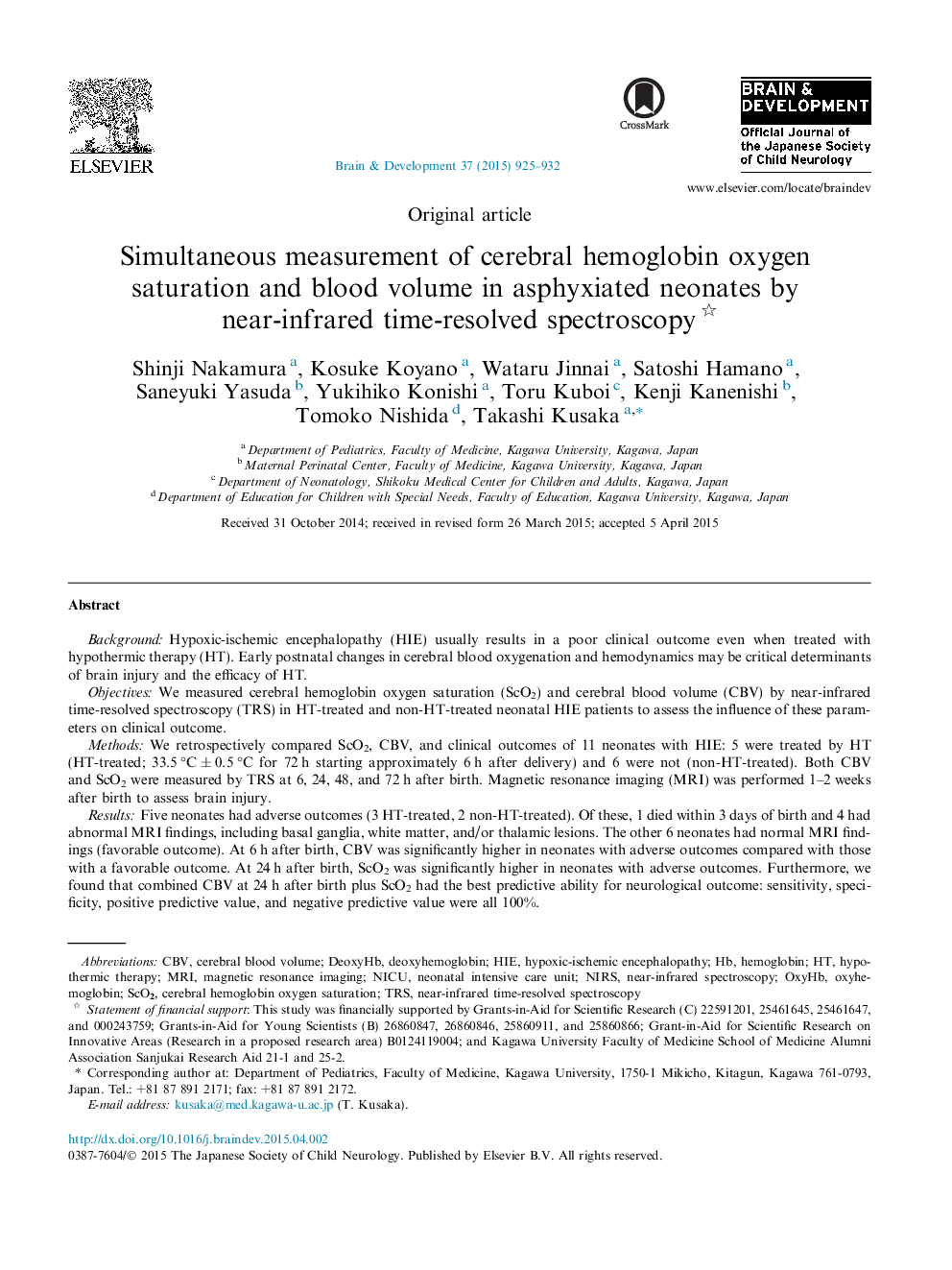| کد مقاله | کد نشریه | سال انتشار | مقاله انگلیسی | نسخه تمام متن |
|---|---|---|---|---|
| 3036887 | 1184389 | 2015 | 8 صفحه PDF | دانلود رایگان |
BackgroundHypoxic-ischemic encephalopathy (HIE) usually results in a poor clinical outcome even when treated with hypothermic therapy (HT). Early postnatal changes in cerebral blood oxygenation and hemodynamics may be critical determinants of brain injury and the efficacy of HT.ObjectivesWe measured cerebral hemoglobin oxygen saturation (ScO2) and cerebral blood volume (CBV) by near-infrared time-resolved spectroscopy (TRS) in HT-treated and non-HT-treated neonatal HIE patients to assess the influence of these parameters on clinical outcome.MethodsWe retrospectively compared ScO2, CBV, and clinical outcomes of 11 neonates with HIE: 5 were treated by HT (HT-treated; 33.5 °C ± 0.5 °C for 72 h starting approximately 6 h after delivery) and 6 were not (non-HT-treated). Both CBV and ScO2 were measured by TRS at 6, 24, 48, and 72 h after birth. Magnetic resonance imaging (MRI) was performed 1–2 weeks after birth to assess brain injury.ResultsFive neonates had adverse outcomes (3 HT-treated, 2 non-HT-treated). Of these, 1 died within 3 days of birth and 4 had abnormal MRI findings, including basal ganglia, white matter, and/or thalamic lesions. The other 6 neonates had normal MRI findings (favorable outcome). At 6 h after birth, CBV was significantly higher in neonates with adverse outcomes compared with those with a favorable outcome. At 24 h after birth, ScO2 was significantly higher in neonates with adverse outcomes. Furthermore, we found that combined CBV at 24 h after birth plus ScO2 had the best predictive ability for neurological outcome: sensitivity, specificity, positive predictive value, and negative predictive value were all 100%.ConclusionEarly postnatal CBV and ScO2 elevations were predictive of a poor outcome in HIE. Therefore, measuring combined CBV plus ScO2 at 24 h after birth can allow more precise prediction of neurological outcome. Control of postnatal CBV and ScO2 is critical for effective HIE treatment.
Journal: Brain and Development - Volume 37, Issue 10, November 2015, Pages 925–932
